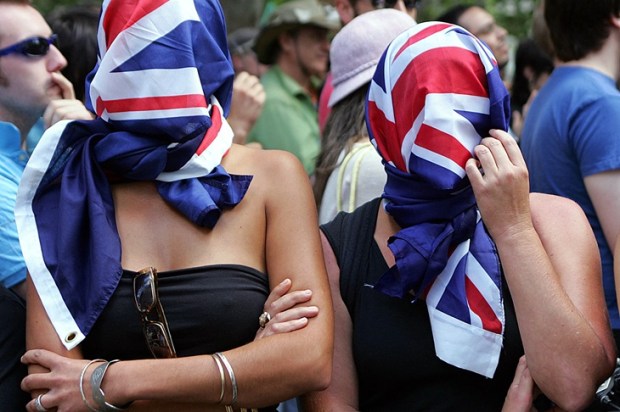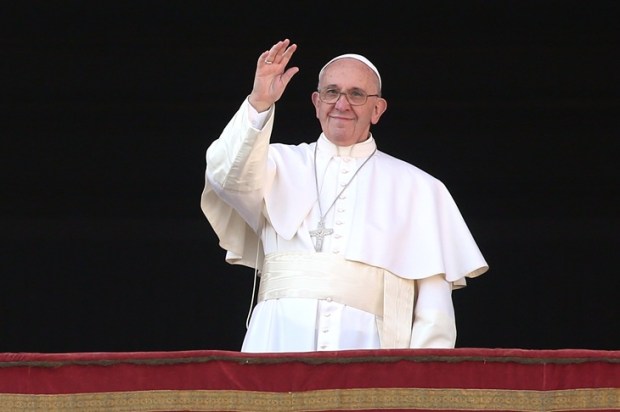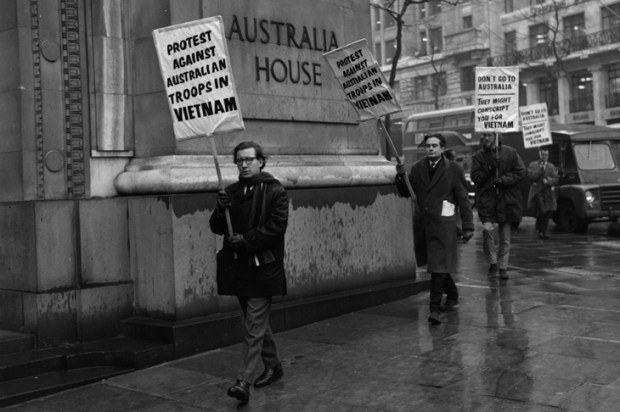One of the epic struggles in the culture wars of our time is reaching its climax, a conflict every bit as important as disagreements over Net Zero or the ‘national curriculum’. It’s the battle in the Roman Catholic Church over the millennia-old Latin Mass and the 1960s ‘modernised’ version. This may not seem of great significance to ordinary Catholics or non-Catholics yet its outcome could determine the future of the Church as one of the pillars of Western Civilisation.
The background to this is the second Vatican Council (1963-65). Many ‘progressive’ Catholics, including the present Pope, regard the centuries of Christian history before the council as steeped in darkness and error. With its commitment to aggiornamento – ‘updating’ – the council, they believe, replaced superstition with enlightenment. Old-fashioned Catholicism – religious processions, meatless Fridays, relics – went out the window. The changes were most visible in the replacement of the Tridentine or Latin Mass, the Church’s eucharistic liturgy, with a new version, the Novus Ordo. Out went the Latin and the plainchant; in came vaguely worded folksy Masses with guitars. Out went linguistic uniformity, which previously had been a source of Catholic pride – you could go to Mass anywhere in the world and follow it exactly. In came vernacular Masses, of varying qualities of translation. You wouldn’t attend one for the mellifluity of the language.
The new Mass bears a similar relation to the old as a Reader’s Digest condensed book bears to the original. The essentials are there but much substance is missing. By substance traditional Catholics understand spiritual value, the capacity to inspire devotion, the allusions to a world beyond this one – what is sometimes called numinosity. And this is what a growing number of Catholics, many if not most of them young, many with young families, find in the old Mass, and have found since Pope Benedict XVI decreed in 2007 that the old Mass should be as freely available as the new one – a permission, humiliatingly for the retired Benedict, arbitrarily rescinded by Pope Francis.
Francis disapproves of – detests is not too strong a word – the old Mass. He and many in authority in the Church think it places too much emphasis on the priest and not enough on the people, something those who attend it would contest. They do not explain how the Church could have managed for two millennia with this defective liturgy nor do they demonstrate how a council more than two generations ago could still be regarded as a modernising force. That council was to have been a ‘new springtime’ in the Church, and council apologists cling to this view in the face of all the evidence to the contrary – the emptying churches, the vanishing vocations, the lapsed Catholics who outnumber the practising ones. True, this decline is not necessarily attributable to Vatican II only – all Christian churches have lost ground in recent years – but the council certainly hasn’t helped reverse it.
It is in congregations attached to the old Mass that the numbers are growing again. Rather than being welcomed, this has caused dismay in Rome: these congregations, say Vatican hierarchs, are ‘repudiating’ Vatican II; they are ‘rejecting’ its enlightened reforms. This is untrue, if for no other reason than that Vatican II is irrelevant ancient history to today’s youth, if they have heard of it at all. They are attracted to the old Mass because they see it as part of their legitimate spiritual heritage.
Nevertheless, Pope Francis severely reduced the availability of the Latin Mass three years ago and there are persistent rumours that it is about to be forbidden altogether. Just last week the Vatican intervened to cancel perhaps the best attended weekday Latin Mass in Australia – in Melbourne’s St Patrick’s Cathedral. Basically, a Vatican bureaucrat – an Italian bishop who ought to be paying more attention to the collapse in churchgoing in his own country – told the Archbishop of Melbourne, Peter Comensoli, that he had to shut it down. And the Archbishop complied.
Apart from the cultural vandalism – the Latin Mass, for which some of the world’s greatest music has been written, is part of the Western artistic canon – it is hard to imagine the CEO of an ailing commercial organisation closing its one prospering branch. But that is what it amounts to. A midweek congregation of 850 filled the cathedral for the last Latin Mass. Where do they go now? They should all learn to love the new Mass, says the Pope, overlooking the fact that that’s what they grew up with and have already shown their opinion of by opting for the old rite.
Not the least disturbing aspect of this affair is that it reveals that bishops, supposedly the successors of the apostles, sharing authority with the Pope – ‘collegiality’ is the buzzword – yet each one in theory supreme in his own diocese, are in reality puppets of the Vatican. Where some bishops might make a show of independence, Archbishop Comensoli has caved in and allowed himself to be treated as an underling. Also on display is the iron fist in the velvet glove of a Pope who is all avuncular and jokey when it suits him but at heart autocratic and dictatorial.
Liturgical squabbling might seem a storm in a chalice, but what is being played out in Melbourne and elsewhere is a battle for the future of the Church, a deep disagreement in Roman Catholicism which, if not resolved, could lead to schism and the disintegration of Catholicism as a vital force. Much will depend on the next Pope. Will he reverse Francis’s ban? The Church not been so disunited since the Reformation – all because of the ‘second springtime’. What would a second winter have led to?

























